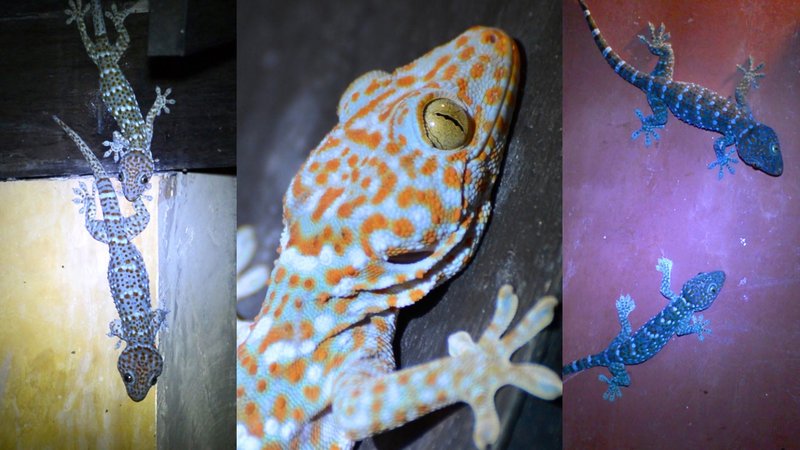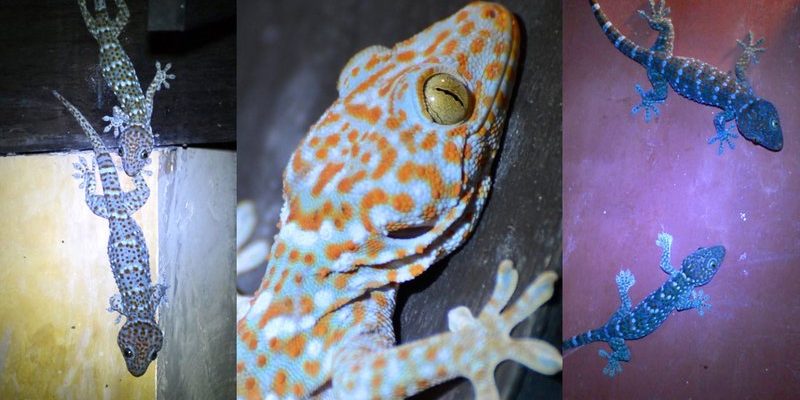
The Tokay gecko, known scientifically as *Gekko gecko*, is a true marvel of nature. With its colorful, mottled skin and distinct vocalizations, it has captured the interest of both scientists and nature enthusiasts alike. But what brought these geckos to where they are today? Let’s dive deep into their evolutionary history and discover the journey of this remarkable reptile.
What Makes the Tokay Gecko Unique
Before we dive deep into the evolutionary history of the Tokay gecko, it’s essential to understand what makes them stand out. These lizards can grow up to 12 inches long, making them one of the larger gecko species. Their skin is often a mix of bright blues and greens, which allows them to blend into their tropical surroundings. This vibrant coloration isn’t just for show; it plays a crucial role in their survival.
Vocalizations are another fascinating aspect of the Tokay gecko. Unlike many of their silent cousins, these geckos are known for their distinctive, loud calls, which sound like “tokay, tokay.” This unique trait is vital for communication, especially during mating season, setting them apart from other reptiles. You might be wondering how all these features came to be.
The Ancestry of Tokay Geckos
To understand the Tokay gecko’s journey, we need to step back in time. The family of geckos, known as Gekkonidae, has ancient roots. Scientists believe that geckos first appeared over 200 million years ago during the late Triassic period. The Tokay gecko’s ancestors split from other lizard lineages and began to adapt to different environments—the lush jungles of Southeast Asia being one.
The remarkable adaptations of these geckos—like their sharp claws for climbing and their ability to thrive in both arboreal and terrestrial habitats—can be traced back to their environment. They evolved to have a robust body and a powerful tail for balance, which is vital for navigating the tree canopies they so often call home. Isn’t it interesting how living things can change over time to fit their surroundings better?
Habitat and Distribution
Tokay geckos primarily inhabit tropical and subtropical regions, where humidity and temperature are just right. You’ll mostly find them in countries like Thailand, Malaysia, and Indonesia, but they’ve also made their way to places like the Philippines. Their adaptability is quite impressive; they can thrive in both natural forests and urban settings, often being found on buildings and in gardens.
This adaptability reflects their evolutionary success. Over generations, Tokay geckos who thrived in varying environments passed their traits to their offspring, spreading their genes widely. When you consider that they can often be seen in urban areas, it’s a testament to their resilience—blending into human habitats while still retaining their wild instincts.
Feeding Habits and Predatory Adaptations
The diet of a Tokay gecko is as fascinating as their history. These creatures are primarily insectivorous, feasting on a variety of insects—like crickets and roaches—as well as small vertebrates. Their ability to hunt effectively relies on their keen eyesight and fast reflexes.
The Tokay gecko has developed a unique hunting strategy, using its superb camouflaging abilities to ambush unsuspecting prey. Imagine it perched silently on a branch, its bright colors blending into the vivid greens and browns of the foliage. When the moment is right, they strike with lightning speed! This efficient hunting method not only showcases their adaptability but is also a key aspect of their survival over millions of years.
Reproductive Behavior
When it comes to reproduction, Tokay geckos have some intriguing behaviors. Mating usually occurs during the rainy season, which aligns with their peak activity periods. The males are quite aggressive, often using their loud calls to attract females while also warding off rival males. It’s quite a competitive scene!
After mating, the female lays eggs, typically in sheltered spots to protect them from predators. The egg incubation period lasts about 60-90 days, depending on environmental conditions. Once hatched, the baby geckos are independent right from the start. They must quickly learn to fend for themselves in the wild, proving that the circle of life is a tough yet fascinating journey.
Conservation and Future Challenges
Despite their resilience, Tokay geckos face numerous threats today. Habitat destruction due to urbanization, deforestation, and climate change poses significant risks to their populations. These changes disrupt their habitats and feeding grounds, making it harder for them to thrive.
Additionally, the wildlife trade puts further pressure on their numbers. Tokay geckos are often sought after for their exotic appearance in the pet trade. Conservation efforts are vital to ensure their survival. Protecting their natural habitats and regulating trade can help maintain the delicate balance necessary for these incredible creatures to continue their evolutionary journey.
The Fascination with Tokay Geckos
What’s not to love about Tokay geckos? They’re not just beautiful; they’re also incredibly interesting animals with a rich evolutionary history. From their unique vocalizations to their impressive adaptability, Tokay geckos remind us of nature’s wonders. Their story is one of survival, adaptation, and resilience.
For anyone interested in reptiles, understanding the Tokay gecko’s evolutionary journey provides a glimpse into how species continue to change and adapt in the face of challenges. These remarkable lizards are a testament to the power of evolution and the intricate web of life that surrounds us.
In conclusion, the Tokay gecko encapsulates a story of evolution that’s as vibrant as its colors. By exploring their history, we not only appreciate their beauty but also recognize the importance of preserving their habitats for future generations. Nature has so much to teach us, and the Tokay gecko is just one of its many remarkable lessons.

